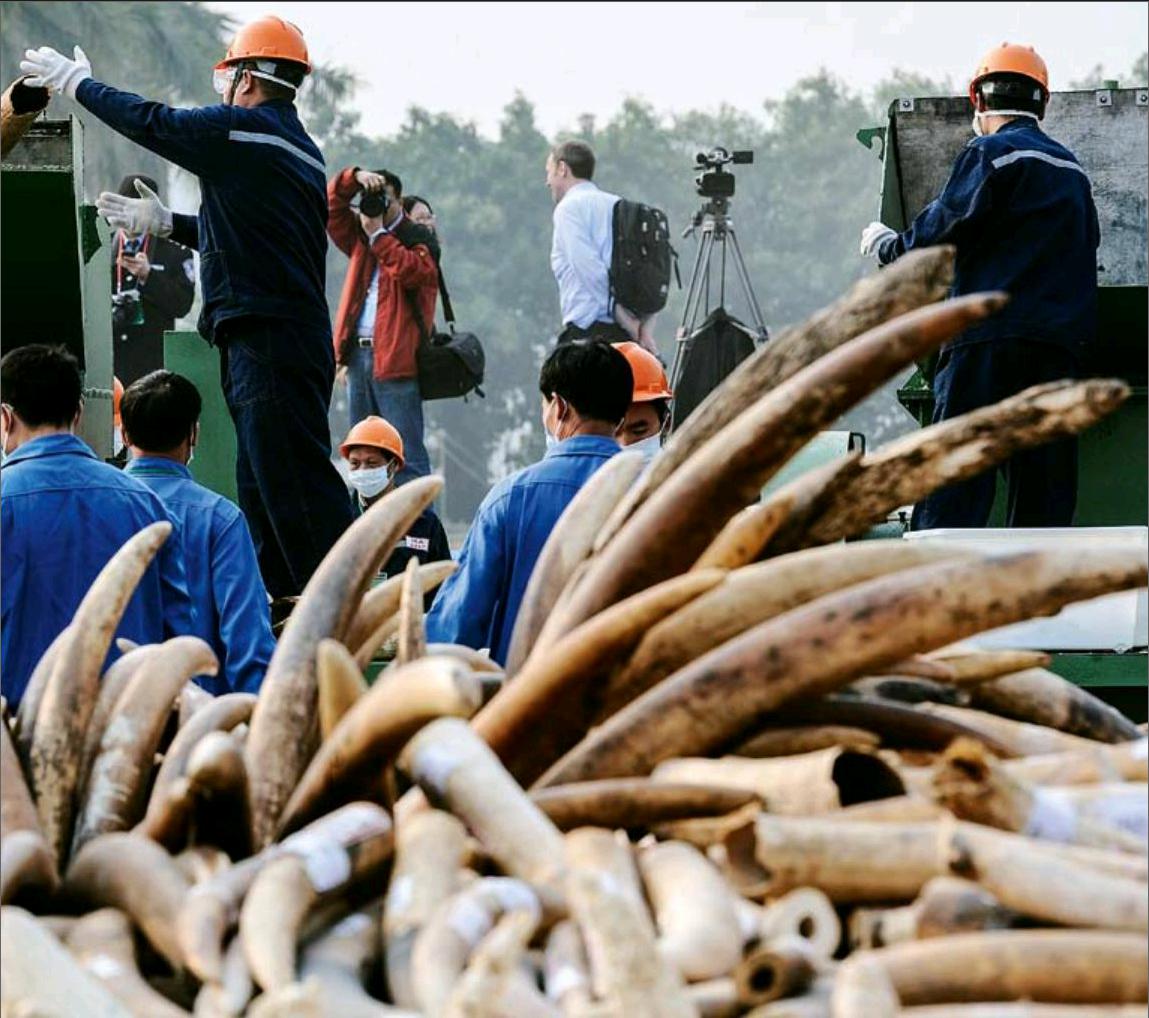The Elephant in the Room
by+Qiu+Fei

As ivory smuggling activities have continued increasing for decades, African elephants are now facing their severest situation ever. Poachers remove their tusks brutally, which almost always results in a bloody death.
Attempting to join many other countries in containing the problem, the Chinese government destroyed 6.1 tons of confiscated ivory on January 6 in Dongguan City of southern Guangdong Province. Carried out by the State Forestry Administration (SFA) and the General Administration of Customs, the significant move was Chinas first public ivory destruction since 1949.
“Two crushers worked simultaneously,” an on-site employee revealed. “Smaller crude tusks and crafted ivory pieces were dumped into machines and ground up, while huge tusks had to first be cut into smaller pieces with a chainsaw.”
According to the SFA, some of the pulverized ivory will be taken to museums to raise public awareness about wildlife protection. The rest will be stored and kept by the government.
Based on incomplete statistics, at least 17 tons of elephant tusks have been confiscated by Chinas General Administration of Customs since 2011. This huge volume of raw tusks, which is estimated to have come from about 6,000 elephants, was all sealed under the supervision of local law-enforcement departments or the SFA, except for a small amount to be used for research and investigation.
“Activities such as ivory smuggling and illegal trade are definitely the biggest threats to the protection of African elephants and other wildlife,” Zhao Shucong, director of the SFA, commented. “The first public ivory destruction in China demonstrated the countrys determination to discourage illegal ivory trade, protect wildlife and raise public awareness.”
Having witnessed the entire process of ivory destruction, John Scanlon, secretarygeneral of CITES (Convention on International Trade in Endangered Species of Wild Fauna and Flora), suggested that the significant move by the Chinese government not only increased public awareness about the harms of trafficking in endangered species, but also evidenced Chinas resolve to end illegal activities and protect wildlife.
For many animal conservationists who pressed for the destruction of the confiscated ivory, the event at Dongguan was an ideal New Year present. According to advocate Zhang Li, associate professor at Beijing Normal Universitys College of Life Sciences, destroying the confiscated ivory was a gesture to demonstrate the governments resolve to end illegal trade with the aim of protecting animals. “The massive volume of illegal ivory has been removed from the market,” Zhang explains. “But sometimes its hard for the government to safely store the confiscated ivory, which is extremely valuable. In many countries, stored ivory is later stolen.”

“The situation for the African el- ephant is pretty severe,” Zhang adds.“According to CITES report from more than 30 African countries where elephants live, the birth rate of African elephants dropped below their death rate due to excessive poaching in 2011 and 2012. The population of African elephants is falling at an annual rate of about 2 percent. Illegal trade is considered the major reason, so destroying confiscated ivory is a big move to crack down on smuggling for the protection of elephants.”
Sadly, ivory trade remains a major global industry. A report from International Fund for Animal Welfare (IFAW) illustrates that a sophisticated worldwide black market chain including poaching, smuggling, marketing and consumption has formed solely for ivory. Furthermore, according to monitoring by CITES, pov- erty, corruption (insufficient management), market demand and illegal trade are four major causes of rampant poaching. Now the target market for about 40 percent of poached ivory, China is considered its largest market.
The ivory destruction move is sure to sound an alarm for poachers. However, protecting all wildlife, including elephants, is never as simple as waving a wand. There- fore, on behalf of CITES, John Scanlon stressed that ending the illegal trade of endangered species and ivory requires efforts from every concerned party, including those in the origin country, the transit country, and consumer country. Meanwhile, CITES will not hesitate to work more closely with the Chinese government towards the common goal of protecting endangered animals.
China Pictorial2014年2期
